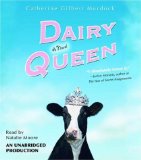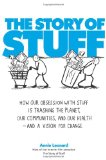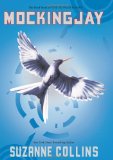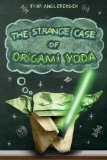Review of Dairy Queen, by Catherine Gilbert Murdock
by Catherine Gilbert Murdock
read by Natalie Moore
Listening Library, 2006. 5 CDs; 6 hours, 9 minutes.
Starred Review
2010 Sonderbooks Stand-out: #1 Other Teen Fiction
I’d heard a lot about Dairy Queen, but never got around to reading it until I heard that Catherine Gilbert Murdock was speaking at the local MAYALIG (Metropolitan Area Young Adult Librarians’ Interest Group) conference. I had loved Princess Ben, so I definitely wanted to hear her speak, and thought I might as well listen to Dairy Queen, even though I don’t usually like sports novels.
I loved Dairy Queen. In fact, I did something I don’t usually do and when I was close to the end, I couldn’t stand it and brought the CD into the house to finish listening.
In this book we’ve got the classic romantic plot. Boy meets Girl and they can’t stand each other. But they are thrown together and get to know each other, and things change.
However, the classic plot has never before been told in quite this way! We’ve got football and cows and a girl who’s definitely not the usual type to date the high school quarterback.
D.J. Schwenk lately has had to take on most of the work at her parents’ dairy farm. She had to drop out of basketball her sophomore year to do the milking. Her family doesn’t talk: Her little brother hardly at all, and her two older brothers, who are off at college, don’t talk to the family ever since the big fight.
D.J.’s older brothers were legendary football players in their small town of Red Bend, Wisconsin. So D.J. knows a lot about training football players. Their family friend is the coach of the archrival team at Hawley. He tells Brian Nelson that if he wants to play quarterback next year, he should learn how to work this summer — on the Schwenk farm.
At first D.J. and Brian detest one another. D.J. thinks he’s a lazy whiner, and Brian thinks D.J. is just like the family’s cows. But D.J. knows a thing or two about football, and as she spends the summer training Brian, they start talking. Brian’s Mom is a family therapist, so he knows how important it is to talk. D.J., however, neglects to tell him some crucial things — like the fact that she’s planning to try out for the Red Bend football team — and play against Brian.
I was completely hooked by this audiobook. I love romance that’s done slowly — like real life, with misunderstandings and a slow coming together. D.J. and Brian come from very different worlds, and even if they can come together in romance, can their relationship get through facing each other on the football field?
This is a sports novel and a romance and a family story, all rolled into one, with characters you’ll come to love. If you told me this was a book about a girl who joins the boys’ football team, I wouldn’t be interested. But it’s a great story about a feisty girl who doesn’t want to live life as a cow.
Find this review on Sonderbooks at: www.sonderbooks.com/Teens/dairy_queen.html
Disclosure: I am an Amazon Affiliate, and will earn a small percentage if you order a book on Amazon after clicking through from my site.
Source: This review is based on a library book from the Fairfax County Public Library.



